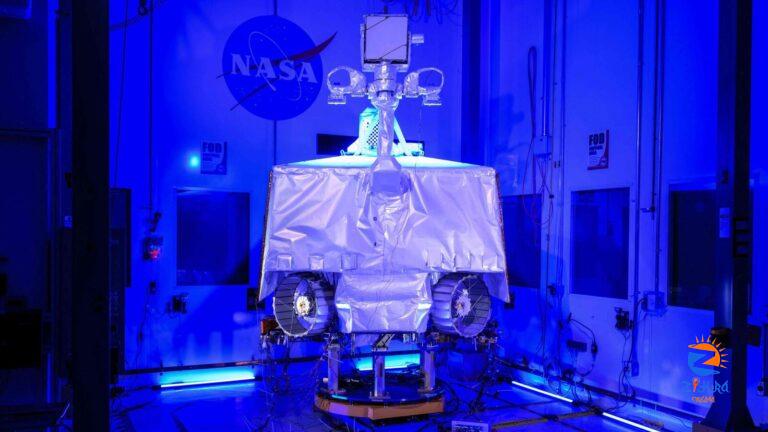
[ad_1]
NASA HAS big plans for the Moon. By the end of the decade, it wants to send humans back to the lunar surface. Before then, though, it intends to send probes to look for ice at its south pole. This ice carries enormous scientific value. It could shed light on how Earth acquired its liquid water; it is also ripe for conversion into rocket propellant.
Scientists were, therefore, left somewhat confused in July when the agency abruptly cancelled its almost-complete Volatiles Investigating Polar Exploration Rover (VIPER), a craft designed to look for this ice, and offered it to commercial companies instead. “It’s all a bit weird,” says Benjamin Fernando, a planetary scientist at Johns Hopkins University.
The rover, roughly the size of a Fiat 500, has already been built. It is undergoing final testing at NASA’s Johnson Space Centre in Houston ahead of a planned launch next year on a SpaceX Falcon Heavy rocket, carried by a lander built by Astrobotic, a Pennsylvania-based firm, that NASA has already paid for. In recent years, such outsourcing has been characteristic of NASA’s new approach to lunar exploration, in which it buys landers and launchers off private companies rather than building its own. Never before, though, has the agency given an almost-complete mission to a private company.
One of VIPER’s main instruments is a drill, built to dig for ice up to a metre beneath the lunar surface. VIPER was designed to deploy this drill in some of the craters at the Moon’s south pole, which, because of the configuration of the lunar orbit, never see direct sunlight. Temperatures at the floor of these craters do not rise above -160°C, and it is here that previous spacecraft have seen hints of ice. If a rover delivers hard proof, however, upcoming human lunar missions could then extract the ice, possibly splitting off its hydrogen atoms to make rocket fuel. Eventually, says NASA, the Moon could become a refuelling stop for human missions farther into the Solar System.
Lofty goals. Also, unsurprisingly, not cheap. According to NASA, the VIPER project has cost $433m so far, well above its initial budget of $250m, which is more than the agency—with many other missions to fund—says it can afford.
What NASA proposes, instead, is that a commercial company takes command of VIPER. In exchange, it would have to pay for the rover’s final tests; find a way to land it on the Moon (possibly with a different lander); and then perform its original scientific mission. Any new owner would still be expected to reveal any findings made with the rover, but they could also use the opportunity to further their own lunar ambitions. Eleven companies have thus far submitted proposals. “There’s growing interest in commercial companies doing their own scientific missions,” says Laura Forczyk, founder of the Georgia-based space consulting firm Astralytical.
One of the companies known to have expressed interest is Houston-based Intuitive Machines, which is already under contract with NASA to develop a lunar communications network, among other projects. It was also the first private company to achieve a partially successful lunar landing (its craft tipped over), in February 2024. Another interested party, ORBITBeyond, based in New Jersey, has also been selected by NASA as a contractor for potential future Moon missions. The companies’ exact plans for VIPER remain unclear.
Given the sunk costs, NASA is expected to save only $84m from VIPER’s cancellation. Congress must approve NASA’s request to cancel the rover before it does so, with a decision expected in the coming months. “We want a more detailed assessment,” says a spokesperson for the House Science, Space, and Technology Committee. “One of our biggest concerns is how cancelling VIPER will impact our competitiveness with China,” they add, given China’s own ambitions to prospect for ice at the Moon’s south pole.
Other missions might experience a similar fate as NASA, and other government agencies, face increasingly tight budgets. For those with deep enough pockets, though, there are bargains to be had.
© 2024, The Economist Newspaper Ltd. All rights reserved.
From The Economist, published under licence. The original content can be found on www.economist.com
[ad_2]